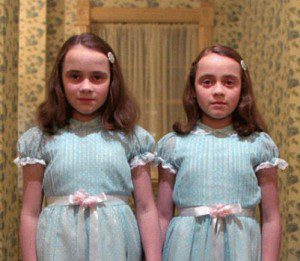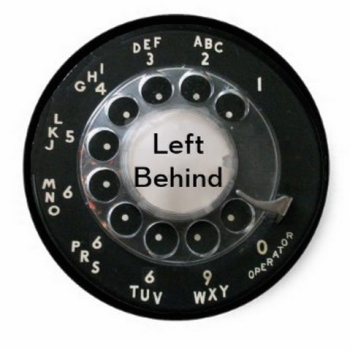From November 17, 2013: “Heaven Is for Doppelgangers: You will be replaced in the afterlife”
This post was about the best-selling book and semi-successful movie Heaven Is For Real, which told the story of a young boy who died and visited Heaven before doctors brought him back to life. This book is not to be confused with The Boy Who Came Back From Heaven, which told the story of a young boy who died and visited Heaven before doctors brought him back to life. The latter book was denounced as a fraud by the young boy and his mother, forcing its publisher to halt its distribution. The people behind Heaven Is For Real still insist that it’s for real, even though nothing about the story it tells makes a lick of sense.
Stories have rules, even stories about the great beyond. That’s why goofy stories like It’s a Wonderful Life, or Heaven Can Wait, or Defending Your Life can still work. They may suggest ridiculous rules about how the afterlife works, but they abide by the rules they establish, and so we can follow them, enjoy them, and even learn from them.
One problem with the best-selling book Heaven Is for Real — now a major motion picture — is that it violates its own rules. Todd Burpo’s “memoir” follows the near-death experience of his very young son, who was not quite 4 years old when he flatlined and was broad brought back by doctors.
Here, again, is the trailer for the film, in which Greg Kinnear plays the role of Todd Burpo:
Burpo claims that his son’s experience confirms Plato’s theories about the migration of souls. While the boy’s body lay on the hospital bed, Burpo says, his soul went to Heaven where he embraced long-dead family members and sat on Jesus lap atop a rainbow-colored horse.
That multi-colored horsey is a reflection of the central theme of this story, which is that we’re getting a glimpse of Heaven through the eyes of a child. Burpo’s son visited Heaven as a 4-year-old child, and so the description of Heaven he provides us is a description of what that paradise looks like to a 4-year-old child.

Here, then, is a central rule of this story: We arrive in “Heaven” at whatever age we are when we died. Since young Colton Burpo was a toddler when he briefly died, his time in Heaven was spent there as a toddler.
Yet this rule isn’t quite so simple. Burpo also says his son told him of meeting his great-grandfather in Heaven, but shown a picture of his father’s grandfather, the boy doesn’t recognize him. “In Heaven,” he says, “everybody’s young.” Shown another picture later, of his great-grandfather as a young adult, the boy says, “That’s him. That’s Pop.”
So Pop, who lived to be an old man before he died, is a healthy, 30-ish man in Heaven. Our rule is trickier than it first seemed. Apparently, in the Heaven of this story, the souls of the departed are reincarnated into the bodies they once had in the prime of life. For the great-grandfather, that means being restored to his younger self. But for young Colton it still meant being in Heaven as a toddler, which was as much of a prime of life as he had yet attained before his thankfully brief brush with death.
But that can’t be the rule either, because this story also tells us about another deceased relative of the family that the boy meets in “Heaven.” Here’s how that encounter is described in the movie:
Mom: (to little boy) Honey, who told you I had a baby die in my tummy?
Little Boy: In Heaven, this little girl came up to me, and she told me she died in your tummy.
Burpo presents this as a piece of proof that the story of his son’s visit to Heaven is true. The young boy couldn’t possibly have known about the miscarriage his mother had years before he was born, yet he learned of it from the “little girl” he met in Heaven who told him she died in his mommy’s tummy. This is proof that young Colton really must have been in Heaven. (And also, of course, proof that Platonic human personhood begins at conception and that therefore everyone must always vote Republican forever.)
But what are we to make of this encounter?
We should note, first, the statistical implausibility of Colton having only one such heavenly “sister.” More than half of all fertilized eggs are lost in the earliest stages of pregnancy, so just as the Burpos suffered a later miscarriage that their son never knew about, so too they almost certainly must have had one or more earlier miscarriages that even they never knew about. Again, if every zygote and embryo is a fully human person who goes to Heaven when they die, then the overwhelming majority of people in Heaven are people who were never born.
But why was this unborn sister of Colton’s a “little girl” in Heaven? She was never a little girl here on Earth.
This reincarnation at a different age isn’t like what happened to “Pop.” Pop died as an old man, but in Heaven is restored to the full youth and health he previously enjoyed when he actually lived as an actual young adult. “In Heaven, everybody’s young” works as a rule for those who ever attained youth — it’s something like H.G. Wells’ “four dimensional portrait” in The Time Machine: “Here is a portrait of a man at 8 years old, another at 15, another at 17, another at 23, and so on. All these are evidently sections, as it were, Three-Dimensional representations of his Four-Dimensioned being, which is a fixed and unalterable thing.”
The youthful Pop is thus a kind of Platonic ideal (in more than one sense) of the great-grandfather as a “four-dimensioned being.”
But this sister is a different matter. We cannot see a portrait of her “at 8 years old, another at 15, another at 17, another at 23, and so on” because she never was 23, or 17, or 15, or 8. She never was 5 or 4 or 3 or 2 or 1. A portrait of her at 23 could not be a portrait of her any more than I could show you a photograph of John F. Kennedy at age 70. A portrait of this sister as a “little girl” could not really be a portrait of her, only an invention of something somewhat like her, offered instead of her.
This “little girl” is not Colton’s sister. His sister died before her first breath. This “little girl” in Heaven cannot be her.
It says it is her, though. It says it is there as her, in her place. But it is something else. Something else instead of her.
To avert the immensely creepy implications of this heavenly doppelganger posing as Colton’s sister Burpo waves the God wand and appeals to a kind of deus ex machina to patch over this disturbing dark doorway in the plot of his story. God is all-knowing and all-powerful, so God is therefore capable of knowing exactly what sort of “little girl” this unborn sibling would have grown to become and is capable of welcoming her into Heaven as that little girl she never was.
But this won’t do, for at least two reasons.
First, if this “little girl” is meant to represent the grown person this pregnancy “would have” become, then why a little girl and not, say, a 30-ish accountant? The answer cannot be that it’s because she never lived to become a 30-ish accountant, because she never lived to become a little girl, either.
If we are to appeal to infinite knowledge of all possible alternative realities in order to create a walking, talking, wholly aware self to be this sister’s heavenly reality, then why would that reality be limited to childhood? I suppose one explanation is that the sibling who died “in mommy’s tummy” would have otherwise gone on to live a happy life as her daughter before, ultimately, dying tragically as a little girl years before she ever had the chance to become the 30-year-old accountant she might otherwise have become. And thus, in “Heaven,” this entity is magically granted the form of the “little girl” she never actually was, rather than the form of the 30-something accountant she never actually was, or the form of the 53-year-old marathon runner she never actually was (or the form of the Hell-bound 25-year-old Satan-worshipper she never actually was either).
But that explanation contradicts the whole thrust of this story, which seems intended to offer a shallow measure of consolation. Such consolation is undermined by the idea that the unborn “children” awaiting us in Heaven would, at best, have died from something else before high school anyway.
A second problem with this magical-seeming appeal to God’s infinite knowledge of alternative futures is the matter of Colton himself. He appeared in Heaven at the age of 3 years and 10 months old because that was the age at which he (almost and/or briefly) died. The same divine infinite knowledge of potential alternative futures that produces the “little girl” his “sister” might otherwise have become was apparently unable to conceive of an alternative possible future in which Colton grew to become a healthy 14-year-old boy. That’s an odd oversight on the part of our deus ex machina, considering that Colton has, in fact, gone on to live and to grow into precisely that healthy 14-year-old boy (albeit one who will likely require years of therapy to overcome his father’s exploitation of this story and to avoid the sad Marjoe-Gortner-esque trail his parents have laid out for him).
This heavenly “little girl” pushes Burpo’s story out of the realm of pious platitudes he intended to explore and into the realm of science fiction. Her presence means we’re not just talking about life after death, but about time travel, alternate universes, a multiverse of multiple dimensions and the like.
It’s either that, or this is a deeply unnerving horror story. If you don’t want to follow this deep into the weeds of quantum gobbledygook and Schrodinger’s sister, then our only alternative is to go back and look through the dark doorway that Todd Burpo has opened for us. There we will see a glimpse of something that looks like Heaven, and it is filled with people who look like us.
But they are not us. They are the things that will replace us — that things that “Heaven” will welcome instead of us.












